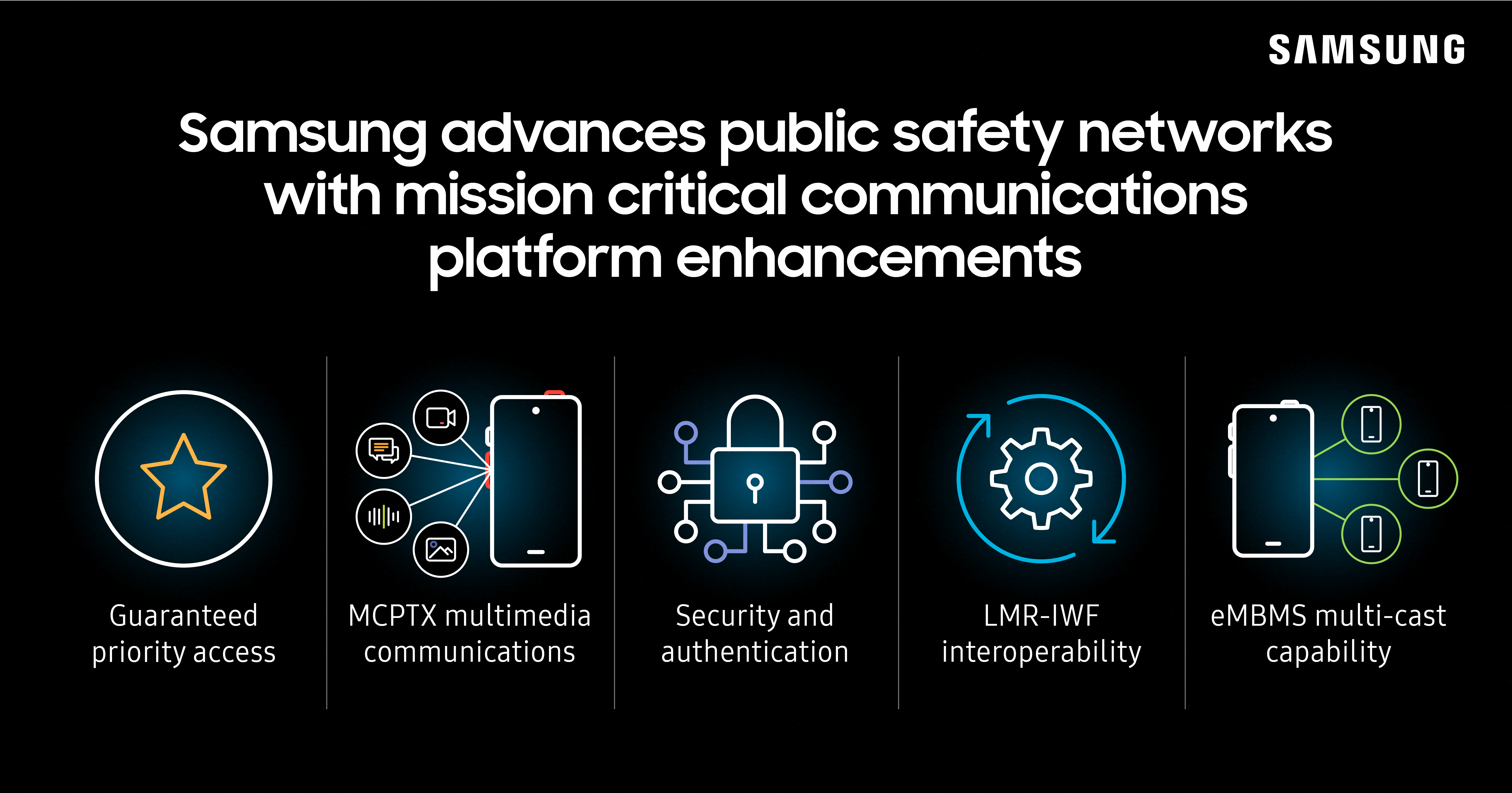Samsung’s Enhancements for Public Safety Networks Drive Next-Gen Mission Critical Communications
8/24/2021

Expertise in interoperability and innovation helps Public Safety Authorities in the U.S. and South Korea bring Push-to-Anything capabilities to first responders
The new solution enables interoperability between advanced PS-LTE networks and legacy Land Mobile Radio (LMR) systems
By Timothy Paul, Senior Manager of Sales, Networks Business, Samsung Electronics America
Supporting first responder critical communications is in Samsung’s DNA. As a global solution provider for public safety networks, including the Public Safety LTE (PS-LTE) network in South Korea (a.k.a. Safe Net), Samsung has driven innovation across networks and devices to deliver mission-critical applications to first responders. We’ve also helped public safety organizations gain access to the best communications capabilities available to respond effectively and stay safe.
Samsung’s growing ecosystem of public safety collaborations includes support for leading operators, which we supply with mobile devices as well as Mission Critical Push-to-Anything (MCPTX) solutions that enable the fast exchange of multimedia communications (i.e. images, voice, video) for first responders. Additionally, Samsung’s commitment to public safety solutions includes standards development to ensure commercial mission-critical solutions meet the highest levels of reliability, performance and security. For instance, Samsung is developing solutions to deliver the first phase of Land Mobile Radio (LMR) interoperability advancing capabilities for first responders.
Samsung’s latest advancement in public safety technology is a new 3GPP standards-based Land Mobile Radio Interworking Function (LMR-IWF), a solution that enables advanced PS-LTE based networks to interoperate with the broad range of legacy LMR networks.

LMR-IWF: The Key to Seamless Public Safety Communications
For decades, LMR has provided first responders with voice communications. However, the technology, while effective for local communications, is not sufficient for broader public safety responses when localities or other agencies—including the police force, firefighters or EMS—have to collaborate with each other to respond to massive emergencies.
Samsung solves this issue with its new LMR-IWF solution. The solution enables interoperability between MCPTX and LMR technology, as well as Project 25 Phase I & II, Digital Mobile Radio (DMR), and Tetra—building a bridge of seamless communications between MCPTX and legacy technologies. Now, a user of LMR technology can communicate with other users of MCPTX technology.

Through pre-commercial testing and validation of its 3GPP standards-based LMR interworking Function, Samsung has identified key benefits for operators and first responders. This includes improved flexibility of network operation for operators and smooth transitions from LMR to PS-LTE networks. Additionally, first responders will experience increased reliability and overall performance boosts in communications during their missions.
Samsung’s LMR-IWF solution is the industry’s first 3GPP-compliant solution, with expected availability by the end of the year. This solution is software-based and can be installed in any data center, unlike existing hardware-based bridge solutions.
Samsung’s Mission Critical Drivers
In addition to interoperability, today’s public safety networks require capabilities that go beyond voice communications and support faster transmissions of multimedia content. To provide first responders with communications that meet today’s high-speed, high-capacity demands, the network-to-device solution must have three key elements:
- Prioritized Access: Samsung’s mission-critical network solution is standards-based and built to be resilient, ensuring guaranteed access with prioritization for first responders on site. For instance, with priority access, authenticated first responders always get dedicated network resource allocation, ensuring their communications are prioritized when responding to an issue. Priority access is established throughout a network for first responders’ devices, and reallocate network resources to provide added capacity for their communications. This is critical since broadband networks would otherwise not differentiate mission-critical calls versus a streaming user.
- Secure, Token-based Access and Device Authentication: Security at both the device and network level ensures only authorized users gain access to critical network assets. With expertise in both Networks and Client software that power devices, Samsung can provide end-to-end protection. Networks using Samsung’s MCPTX solution have token-based authentication and access to their device and network, along with enterprise mobile management (EMM) solutions. Samsung’s ongoing ecosystem development helps drive MCPTX technology that provides secure, open access to qualified developers and advance platform capabilities.
- Broadcast Capabilities: In today’s dynamic public safety environment, the capability to share a live video or a data file, such as a floor plan schematic, is invaluable to responders. To make this a reality, Samsung’s MCPTX solution provides eMBMS functions that allow users to initiate a multi-cast session in high-quality service without user congestion. Moreover, MCPTX offers resilient and scalable broadcast capabilities built for multiple users in the field.
For more information, please refer to Samsung’s whitepaper on mission-critical network solutions. And look out soon for our next blog discussing the evolution of standards for mission-critical technologies, and the leading role Samsung plays in the development of these standards.